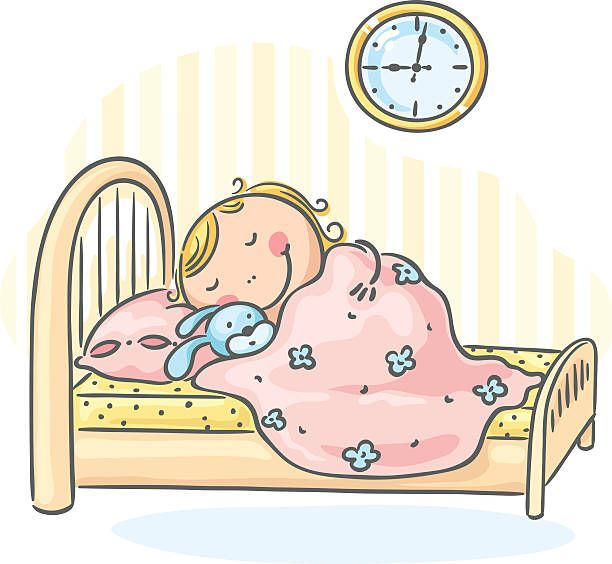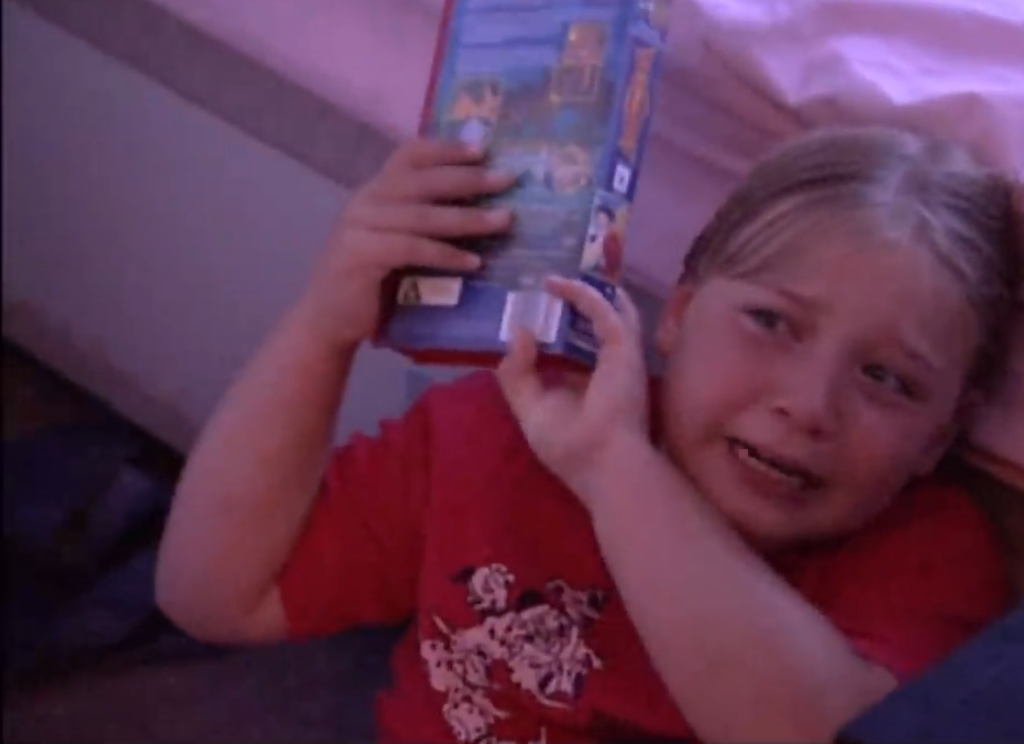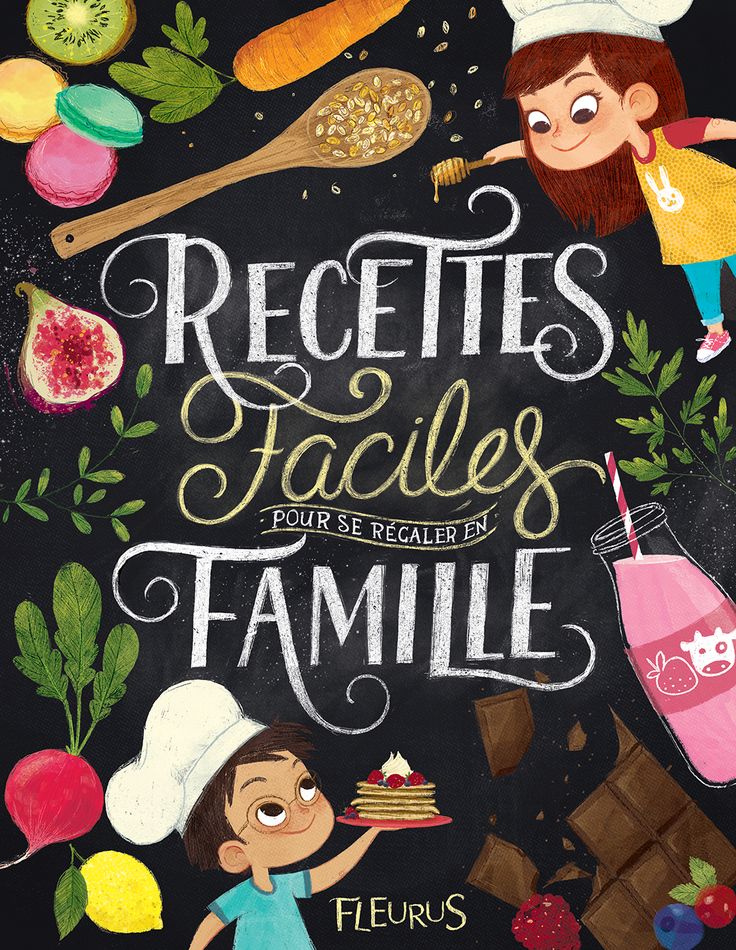Baby screams at bedtime feed
Baby Cries During the Bedtime Routine
Struggling when the baby cries during the bedtime routine uncontrollably? Learn how to keep evenings calm when you put her down before sleep.
Everyone says to get a bedtime routine going for your baby. To create a calm, relaxing environment at the end of the day so that she knows it’s time to sleep.
But what do you do when she cries hysterically during before bed? The minute you bring her into the room and turn down the lights, she senses that bedtime is coming and starts to cry. The more you try to soothe her, the more upset she gets.
You lay her down under the mobile, hoping she’d transition into a sleepy state, only for her to whimper and cry. Just when you thought she was sleepy after a feeding session, she’d wake up and cry the minute you put her down to sleep.
This happens at every night time, too. She seems to hate the whole ordeal, from changing diapers to getting swaddled. She cries and doesn’t stop until she’s so worked up that she just conks out.
And forget about bath time—what everyone said would help her relax has only riled her up even more.
When your baby cries during the bedtime routine
So, what gives? How is bedtime going to get any easier when the routine leading up to it is making your baby miserable?
Bedtime doesn’t always come easily for many of us. Thankfully, there are a few adjustments you can make to turn things around.
Bedtime should be a relaxing transition to sleep, not one filled with anxiety and frustration. By making a few change before and during your bedtime routine, you can help her sleep soundly. Take a look at these tips to see how:
1. Separate activities your baby doesn’t like
Which bedtime activities get your baby riled up and crying uncontrollably at night? Is it bathing in the bathroom, or getting her diaper changed? Take note of which activities aren’t fan favorites and separate them from your bedtime routine.
For instance, if she hates taking a bath but you’d still like her to take one daily, try bathing her in the morning. If diaper changes send her screaming, change her a good 30 minutes before your official bedtime routine starts.
That way, she doesn’t associate activities she doesn’t like with what should be a pleasant, relaxing part of her evening. And even if she does cry during those activities, at least you’d have done them early enough for her to calm down.
Free resource: Struggling with putting her to sleep? You can teach her to self soothe and sleep on her own. Whether you’ve tried to teach her in the past or are just now considering it, take a look at the 5 key mistakes to avoid. Join my newsletter and grab this amazing resource below—at no cost to you:
2. Start with favorite activities
It’s not easy when your baby starts crying at bedtime the instant she senses that the routine is starting. But what if you began with activities she loves?
Let’s say she enjoys reading books with you, but you tend to save that toward the end, right before you turn off the lights. See what happens if you start the routine by reading books instead. She just might take to it more so than if you’d started with what you normally do.
See what happens if you start the routine by reading books instead. She just might take to it more so than if you’d started with what you normally do.
Or let’s say she likes nursing. While feeding is usually reserved for the end, there’s no rule saying you can’t start off with nursing instead. This could help her calm down for the rest of the evening while you do the other activities to get ready for bed.
3. Do the routine where your baby will sleep
Do you do the bedtime routine in a separate part of the house from where your baby will eventually sleep?
For instance, you might change diapers and nurse her in your room before carrying her to the crib in hers. Or you read books in the living room before transitioning over to where she’ll sleep for the night.
The trouble with this is that the room she’ll be sleeping in might feel so different from where she had been doing the routine all this time. Imagine relaxing with a good book in the living room, only to have to get up to sleep in your bedroom.
If you find that she gets upset when you put her down in her room, try doing the routine there instead. That way, she had already been in her room for the whole evening—the transition to sleeping will feel much smoother.
4. Spend time in your baby’s room during the day
How much time do you spend in your baby’s room during the day? If you’re like me, perhaps not much. You might do tummy time or fold laundry in the living room. Save for diaper changes and, of course, sleep, you might hardly spend time where she sleeps.
You can imagine how unfamiliar her room might feel. No wonder she cries the minute you step in to do the bedtime routine.
Today, try to spend time in her room beyond what you usually do. Play with toys, read books, make funny faces—all these experiences will help her associate her room with something positive.
That way, she doesn’t see her room as just for sleeping or, worse, time away from you. Instead, it’s a source of joy and fun as well.
5. Start the routine earlier
One of the biggest culprit of a bedtime routine gone wrong is that your baby is already overtired by that point. Nothing you do will matter—even her favorite activities—if she’s already miserable to begin with.
If you suspect that she’s simply too tired, start the routine earlier than usual. Watch for tired signs that signal she’s ready to wind down, and start the routine before you see too many of them.
You can also track the time. If she can only stay awake for two hours and your routine takes 45 minutes, start the bedtime routine an hour and 15 minutes before you put her down.
Either way, aim for an earlier bedtime to help her catch up on lost sleep should she need to. An earlier bedtime could mean avoiding potential crankiness in the early evening.
6. Experiment with a night light
For some parents, the bedtime routine goes much smoother once they installed a night light. Babies don’t always understand object permanence, or the idea that something can still exist even if they don’t see it.
Installing a night light can help your baby see her room, easing fears she might have that come with the dark. The room should still be dark enough that she knows it’s time for sleep, but a night light will avoid leaving it pitch black.
7. Keep evening activities subdued
One simple hack that can help your baby stay calm is to simply keep your activities subdued. Keep at least those 20 minutes before you start the routine calm and relaxing. You might want to dim the lights, lower any sounds, or keep your movements slow-paced.
You can also hold her on your shoulder and drape a blanket over her to block out stimulating sights. Being held in your arms while keeping her environment dark and subdued can help her settle into the routine.
Conclusion
It’s pretty hard to rely on a bedtime routine when your baby wants nothing of it. Thankfully, you can try a few tricks to help her take to her evening rituals.
Don’t feel compelled to include activities she doesn’t like into your bedtime routine—it’s totally fine to do them at another time. If she cries the instant she senses the bedtime routine, start with an activity she likes.
If she cries the instant she senses the bedtime routine, start with an activity she likes.
Do most of the routine in her room (or the room she’ll eventually sleep in) so the transition doesn’t feel so different. In fact, spend time in her room during the day so she associates it with positive experiences. If you suspect she’s overtired, start the routine earlier while she’s still content.
Experiment with a night light to ease fears of the dark she might have. And lastly, keep your evenings subdued—this will help her calm down enough to start the routine.
Bedtime routines are important—and now you can finally say you have one that works.
Get more tips:
- Top Children’s Books about Bedtime
- Baby Playing in the Crib Instead of Sleeping? Here’s What to Do
- Effective Techniques to Help Your Child’s Separation Anxiety at Night
- Adjusting to Motherhood and Life with a Baby
- A New Mom’s Guide to a Baby Fighting Sleep
Don’t forget: Join my newsletter and grab 5 Mistakes That Keep Your Baby from Self Soothing below—at no cost to you:
Why your baby cries at bedtime (and how to stop it) — Infant Sleep Australia
They’d rather be awake than asleep.
 Active, busy babies are often grumpy about nap time – they don’t like to miss out on anything and will often resist naps.
Active, busy babies are often grumpy about nap time – they don’t like to miss out on anything and will often resist naps.They are being put down before they are ready. If this happens often, they can start to dread bedtime because they know they’ll be awake in their cot for a while, waiting to become tired enough to fall asleep.
They don’t know how to self settle. If you’re trying to teach your baby how to fall asleep in their cot, and they are not used to falling asleep there, they’re going to be grumpy about it.
First, rule out:
Pain and discomfort. An uncomfortable baby will be upset at bedtime when there is little to distract them from their discomfort. If your baby has mucous or blood in their poo, or if their poo is frothy or runny, their tummy may be feeling sore or irritated. Follow this up with your GP or paediatrician.
Eczema.
 Dry, rough skin, even if very mild, can interrupt sleep, causing settling difficulties and frequent night waking. If your child has eczema, make sure it is well controlled with steroid ointment, speak to your GP, and read this Royal Children’s Hospital information sheet.
Dry, rough skin, even if very mild, can interrupt sleep, causing settling difficulties and frequent night waking. If your child has eczema, make sure it is well controlled with steroid ointment, speak to your GP, and read this Royal Children’s Hospital information sheet.Hunger. If your baby fed recently then that’s great, but if it’s been a while since their last feed then offer a quick feed before you press on with settling them.
Then check you’ve got the environment just right:
Darkness. Some babies struggle to wind down for sleep if there is too much visual stimulation. They may hyper focus on an object or the light coming in around the blinds and become more and more upset. These babies tend to settle much more easily when the room is very dark and uninteresting. Invest in block out blinds or throw a blanket or sheet over the curtain rail, remove mobiles from above the cot, and get down on your baby’s level – what can they see that may be distracting them? Dark, boring bedrooms are best for sleep.

Wind down routine. A consistent calming routine that follows the same order in the lead up to bedtime and nap time, prepares your baby for sleep.
Mask loud noises. Use white noise or some other very boring and consistent noise if your baby is bothered by traffic sounds, other siblings, neighbours, etc.
Imagine you are standing in front of a vending machine. There’s a button on the front, but you can’t see what’s inside the machine. You press the button to see what happens, and a square of chocolate comes out. What do you do next? You’ll probably press the button again to see what happens.
Imagine if the next time you press the button an entire block of chocolate comes out. And then the next time you press the button it’s a toy car.
It’s human nature to continue pressing the button to see what will come out next – especially if it’s something different every time, and especially if your favourite treat (chocolate!) sometimes appears.
But what happens if every single time the button is pressed, just one square of chocolate comes out, every single time? Psychological researchers will tell you that the predictability and monotony of the single cube of chocolate, becomes boring pretty quickly and humans usually stop pressing the button.
It’s human nature. We are a curious bunch!
How does this relate to crying at bedtime? As your baby grows they start to understand the world around them. If every time they cry at bedtime (akin to pushing the button) you do the same predictable, reassuring things, they will stop pushing the button (crying) sooner.
Why? Because they know what to expect from you and it starts to become old. They don’t feel so motivated to get worked up, when the same reassuring (yet rather boring) thing happens. This doesn’t mean you have to leave them alone for long stretches of time, it just means that when you reassure them you will help them calm down faster by sticking to the same type of reassurance, over and over again.
Now imagine if when your baby cries, you do something different every time – maybe you start with a pat, but then they cry more so you sing AND pat, then if the crying continues you walk away for 5 minutes because you’re frustrated, then when you return you pick them up and feed them. This type of response will increase your baby’s crying because they don’t understand what will happen next, and they may randomly receive something nice, like a feed. Just like the example above, when a response is unpredictable, we are inclined to keep pressing the button to see what will happen next.
If you stick to the patting and remain consistent, it may take time, but provided you worked through the above dot points, and your baby is tired enough, they will start to calm down.
So there you have it.
When you persist with one consistent settling strategy, you’ll de-escalate, or reduce your baby’s crying at bedtime.
TASK: Have a think about how you respond to your baby at bedtime when they become upset. Pick one approach you will use to settle your baby, and stick with it.
Pick one approach you will use to settle your baby, and stick with it.
If you need help deciding on a settling approach, or helping your baby learn to settle to sleep in their cot, book an appointment and we will get you started ASAP.
Dr Fallon Cook
Paediatric Sleep Practitioner
why the baby cries while feeding
While the baby is quite a baby, crying is the only way of his communication with his mother and the outside world. If the baby is restless during feeding, he will let you know that he is uncomfortable. We will analyze what can cause baby crying in such a situation.
Dry milk drink "Baby milk" Valio Baby 3 NutriValio for feeding children over 12 months Read more
As a rule, the causes of a baby’s tears at the breast or bottle with a mixture are physiological, and there may be several of them.
Abdominal pain
Most likely, the child is worried about colic (they can start from 2-4 weeks of age and usually end by 3 months). Unpleasant sensations are associated with the fact that the infant has an insufficiently developed intestinal microflora and it is difficult for the digestive system to cope with the task assigned to it. Children's crying during colic is accompanied by arching the back and pulling the legs to the stomach - the pain from the formation of gases in the intestines is always acute. To alleviate the condition of the crumbs, it is useful for a nursing mother to drink teas with fennel, cumin or anise. If your baby is formula-fed, choose formula carefully. Valio Baby baby food is as close as possible to the composition of breast milk and contains the GOS prebiotic, which is necessary for the health of the child's digestive system. The cause of colic is also the wrong feeding technique and, as a result, the capture of excess air by the baby. nine0003
Unpleasant sensations are associated with the fact that the infant has an insufficiently developed intestinal microflora and it is difficult for the digestive system to cope with the task assigned to it. Children's crying during colic is accompanied by arching the back and pulling the legs to the stomach - the pain from the formation of gases in the intestines is always acute. To alleviate the condition of the crumbs, it is useful for a nursing mother to drink teas with fennel, cumin or anise. If your baby is formula-fed, choose formula carefully. Valio Baby baby food is as close as possible to the composition of breast milk and contains the GOS prebiotic, which is necessary for the health of the child's digestive system. The cause of colic is also the wrong feeding technique and, as a result, the capture of excess air by the baby. nine0003
#PROMO_BLOCK#
Earache
Children under one year old often suffer from otitis media, this is due to the anatomical features of the structure of the nasopharynx in babies in the first months of life. A baby may cry during feeding because swallowing causes a sharp pain in his ears. Very carefully touch the tragus of the baby's auricles - if he cries, then you need to see a doctor.
A baby may cry during feeding because swallowing causes a sharp pain in his ears. Very carefully touch the tragus of the baby's auricles - if he cries, then you need to see a doctor.
It is no secret that many neurological disorders are accompanied by headaches. It becomes especially strong when swallowing. If the baby is constantly crying during feeding, be sure to make an appointment with a pediatric neurologist.
Inflammation of the oral mucosa
Crying during feeding may signal that the baby is experiencing discomfort in the mouth or throat. Its cause is most often thrush or pharyngitis. These diseases require treatment under the supervision of a pediatrician. nine0003
Lack or excess of breast milk
The lactation of a nursing woman is affected by a considerable number of factors - the psychological state, fatigue, stress, malnutrition and its lack, improper organization of breastfeeding. The baby may cry because he does not have enough milk. Whether the food shortage is really critical is easy to check using the wet diaper method. By the way, the crying of a baby may also indicate that there is too much milk - the stream is too strong and the baby simply chokes. nine0003
The baby may cry because he does not have enough milk. Whether the food shortage is really critical is easy to check using the wet diaper method. By the way, the crying of a baby may also indicate that there is too much milk - the stream is too strong and the baby simply chokes. nine0003
Unusual taste of breast milk
If a mother ate, for example, something spicy on the eve of feeding, this will certainly affect the taste of milk. The baby, of course, will cry. This cause of children's "grief" is the most easily eliminated - be attentive to your menu and do not upset your beloved baby.
In addition to the reasons described, the reason for children's tears during feeding can be erupting teeth and inflammation of the gums, as well as nasal congestion with allergies and SARS. Be attentive to your baby. If all is well, the baby should not cry while feeding. nine0003
3.46 37
Power supplyShare:
Author: Reetta Tikanmäki
Palm oil in baby food
Infant milk formulas are made from cow's milk. However, in terms of fat composition, it differs significantly from that of the mother.
However, in terms of fat composition, it differs significantly from that of the mother.
Read
Author: Oksana Ivargizova
How to choose a milk formula for a baby
Breast milk is the best food for a newborn baby. It contains all the necessary nutritional components that fully meet the needs of the child and are necessary for his healthy and harmonious development. nine0003
Read
Show all
Why does the baby cry during breastfeeding
Ekaterina Andreevna Yakovleva
pediatrician, consultant on breastfeeding
Why does baby cry while breastfeeding? The answer may lie on the surface and depend on the situation. Some mothers themselves begin to put forward theories that are often incorrect - “I don’t have milk”, “I ate something wrong”, “The milk became tasteless and bitter”, “I shouldn’t have bought silicone pads” . .. Consider the most frequent causes of crying at the breast and options for helping the baby together with Ekaterina Andreevna Yakovleva, pediatrician, breastfeeding consultant and mother of two babies. She knows about the tears of babies not only from professional, but also from maternal experience. nine0003
.. Consider the most frequent causes of crying at the breast and options for helping the baby together with Ekaterina Andreevna Yakovleva, pediatrician, breastfeeding consultant and mother of two babies. She knows about the tears of babies not only from professional, but also from maternal experience. nine0003
WHY A CHILD CRYS DURING FOOD
— Ekaterina Andreevna, is crying during feeding dangerous?
— Crying during feeding is a normal way for a baby to communicate with the outside world. So he calls his mother, shows that he wants to eat or something bothers him. The only thing that can be affected by crying is that the baby will come off the chest and take in air. This will lead to more abundant regurgitation, increased pain in the tummy.
Table. Newborn cries during feeding - 9 reasons0091
— Can a change in priorities of a child affect his behavior at the breast?
- Up to three months, babies have one priority - they need to either eat and sleep or change a wet diaper. After the children become more active, they are already interested in the world around them. Therefore, when feeding in public places, and also when the mother combines the process with talking on the phone or watching TV, the child can be distracted: suck - turn away - suck, ask for different breasts in turn, indulge. nine0003
After the children become more active, they are already interested in the world around them. Therefore, when feeding in public places, and also when the mother combines the process with talking on the phone or watching TV, the child can be distracted: suck - turn away - suck, ask for different breasts in turn, indulge. nine0003
After three or four months, the baby should not be on the breast very often, but mothers find it difficult to readjust and continue to breastfeed constantly to soothe him. But in fact, the child’s needs are already different - he wants to be vilified on the handles, paid attention to him, played with him, showed him toys.
- Let's discuss misattachment in more detail. What can a mother do wrong if the child does not eat well and cries?
- A very common symptom of improper attachment or refusal of the breast is trouble-free feeding only in sleep. When the child sleeps, he eats calmly, and when he is awake, he begins to twist at the chest, cry. Mom can get tired of this, and in order to calm and feed the baby, during the day she gives him a bottle. In such a situation, it makes sense to talk about breastfeeding and work to restore normal feeding. nine0003
Mom can get tired of this, and in order to calm and feed the baby, during the day she gives him a bottle. In such a situation, it makes sense to talk about breastfeeding and work to restore normal feeding. nine0003
Problems may arise from awkward or repetitive posture during feeding. By trial and error, the mother should choose the position that will be most convenient for her and the child. However, if a baby is fed only lying down from birth, at an older age he may refuse to eat in his arms, break out and cry.
A CHILD CRYING WHEN FEEDING - HOW TO HELP
- Ekaterina Andreevna, everything is very individual for small children. How to understand why a child eats and cries? nine0010
— If the baby cries during feeding, the mother should examine the possible reasons for this behavior step by step and:
- Eliminate the reasons related to the child's well-being, which she can deal with herself.
- Practice breastfeeding techniques.

- Seek medical attention if all else fails - child continues to cry and has additional questionable symptoms.
Triad of symptoms that are always alarming
You should also consult a doctor if, during feeding, the child wriggles and cries from constant acute pain, cannot calm down, vomiting, blood and mucus in the stool, rashes in the mouth, stuffy nose are observed. Fever is an acute condition that is not associated with constant (for example, for a month) baby crying during feeding.
— What should I do if my baby refuses to breastfeed?
— The main thing for a mother is to remain calm and adequate. For a breastfed baby, one break can last an hour, and another five to six hours if the baby has slept long and well. Taking long breaks during the day, the child will still finish his daily allowance in order to develop normally. For example, if he has not eaten for six hours during the daytime, he will breastfeed more often at night. Therefore, in feeding children in the first half of life during the day, it is better not to take breaks for more than 3-3.5 hours. With the introduction of complementary foods, the intervals may be slightly longer. nine0003
Therefore, in feeding children in the first half of life during the day, it is better not to take breaks for more than 3-3.5 hours. With the introduction of complementary foods, the intervals may be slightly longer. nine0003
Night breaks are individual and depend only on the child - some children from birth maintain a 6-8 hour interval, and some sleep at night for eight to twelve hours or eat every hour.
Read also
- About the reasons why a child refuses breast milk and whether it is necessary to switch to mixed or artificial feeding in such cases.
— Should I stop feeding if the baby is naughty?
- Depends on age. Mom should feel what exactly the child needs at this moment. If a newborn cries and refuses to breastfeed, you can calm him down, vilify him with a column, shake him, and then attach him to the breast again. If, having calmed down, the child turns away from the chest, then he has eaten.
An older child is distracted from the breast, becoming interested in something else. Do not force feed him. We must try to remove all irritants - feed in isolation in a separate room, not be distracted by gadgets, sounds, or give the child the opportunity to satisfy his interests, and then offer the breast again. nine0003
Do not force feed him. We must try to remove all irritants - feed in isolation in a separate room, not be distracted by gadgets, sounds, or give the child the opportunity to satisfy his interests, and then offer the breast again. nine0003
— What else can help calm the baby?
- Since most causes of crying are not related to medical problems, medication is not needed. It is necessary to relax, set up the baby, pump him, try to competently organize breastfeeding - apply correctly, do not give a dummy, nipple, supplement from a cup or syringe without a needle. As a rule, this is how most feeding problems go away.
— In what situations can a breast be replaced with a bottle? nine0010
— It is not worth replacing breastfeeding with formula feeding without acute vital signs. When a baby is not accepting the breast well, it is worth removing all bottles, continuing to supplement with “non-sucking” items, and contacting a breastfeeding specialist to try to establish attachment and breastfeeding. This is done by a lot of people.
This is done by a lot of people.
- Does changing the feeding regimen help to get rid of crying?
- Rather, these are unrelated things. It is not worth forcibly adjusting the feeding regimen, you need to listen to the child - in the first three months, the children constantly hang on their chest, after they begin to form a regimen and the intervals between meals increase. It is important to feel the needs of the child, because not only hunger, but also other things can disturb him, and if he constantly poke his chest, he will not be very pleased. nine0003
Table. Errors during breastfeeding
The baby cries during breastfeeding for many reasons. It can be improper attachment to the breast, "tangled nipples", inflammatory diseases of the oral cavity, runny nose, colic, teething, lactase deficiency, or a very nervous state of the mother. It is possible to understand what the problem is only by eliminating the organic and psychological causes of crying.











